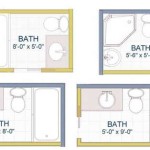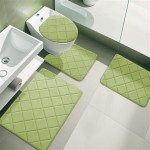Water Proof Paint for Bathrooms
When it comes to decorating your bathroom, choosing the right paint is essential. Not only do you want a color that complements your décor, but you also need a paint that can withstand the moisture and humidity of a bathroom environment. Waterproof paint is a great option for bathrooms because it creates a barrier against water and moisture, preventing damage to your walls and ceiling. In this article, we'll discuss the benefits of using waterproof paint in bathrooms, the different types of waterproof paint available, and how to apply waterproof paint to your bathroom.
Benefits of Waterproof Paint for Bathrooms
There are many benefits to using waterproof paint in bathrooms, including:
- Prevents water damage: Waterproof paint creates a barrier against water and moisture, preventing damage to your walls and ceiling. This is especially important in areas that are prone to moisture, such as the shower area or around the sink.
- Prevents mold and mildew: Mold and mildew thrive in moist environments, but waterproof paint can help to prevent their growth. By creating a barrier against water and moisture, waterproof paint makes it difficult for mold and mildew to take hold.
- Easy to clean: Waterproof paint is easy to clean, making it a great choice for bathrooms. You can simply wipe down the walls and ceiling with a damp cloth to remove dirt and grime.
- Durable: Waterproof paint is durable and can withstand the wear and tear of a bathroom environment. It is resistant to fading, peeling, and cracking, so you can enjoy your bathroom for years to come.
Types of Waterproof Paint
There are two main types of waterproof paint: latex paint and epoxy paint. Latex paint is the most common type of paint used in bathrooms, and it is available in a wide range of colors and finishes. Epoxy paint is a more durable option, but it is also more expensive and difficult to apply. When choosing a waterproof paint for your bathroom, it is important to consider the following factors:
- The type of surface you are painting: Latex paint is suitable for most surfaces, including drywall, plaster, and wood. Epoxy paint is a better choice for surfaces that are exposed to a lot of moisture, such as showers and bathtubs.
- The amount of moisture the area is exposed to: If the area you are painting is exposed to a lot of moisture, such as the shower area or around the sink, you will need to choose a paint that is specifically designed for wet areas.
- The look you want to achieve: Latex paint is available in a wide range of colors and finishes, so you can create the look you want for your bathroom. Epoxy paint is available in a more limited range of colors and finishes, but it is more durable and resistant to moisture.
How to Apply Waterproof Paint to Your Bathroom
Applying waterproof paint to your bathroom is a simple process, but there are a few things you need to do to ensure that the paint adheres properly and provides the best possible protection against water and moisture. Here are the steps on how to apply waterproof paint to your bathroom:
- Prepare the surface: Before you start painting, it is important to prepare the surface by cleaning it thoroughly. Remove any dirt, dust, or grease from the surface, and then sand it lightly to create a smooth surface for the paint to adhere to.
- Apply a primer: A primer will help to seal the surface and create a better bond for the paint. Apply a coat of primer to the surface, and allow it to dry completely before applying the paint.
- Apply the paint: Once the primer is dry, you can start applying the paint. Use a brush or roller to apply the paint in even strokes. Apply two coats of paint, allowing each coat to dry completely before applying the next.
- Seal the paint: Once the paint is dry, you can seal it with a clear sealant. This will help to protect the paint from water and moisture, and it will also make it easier to clean.
Conclusion
Waterproof paint is a great option for bathrooms because it creates a barrier against water and moisture, preventing damage to your walls and ceiling. It is also easy to clean and durable, making it a great choice for busy bathrooms. When choosing a waterproof paint for your bathroom, be sure to consider the type of surface you are painting, the amount of moisture the area is exposed to, and the look you want to achieve. By following the steps outlined in this article, you can apply waterproof paint to your bathroom and enjoy the benefits of a beautiful and protected bathroom for years to come.

The Best Waterproof Paint For Shower Walls Long Home Baths

Is Bathroom Paint Waterproof Hunker

Quick Guide To Waterproof Paint For Bathroom

4 Shower Wall Options Tidylife

Zinsser Watertite Clear Mold Mildew Proof Waterproofing Paint

Do I Waterproof The Entire Bathroom Or Shower Recess

Bathroom Waterproofing Guide For Beginners Asian Paints

Can You Paint Bathroom Tile Yes But It S Complicated Taskrabbit

Re Max Xtra

Bathroom Waterproofing Steps To Floor Ultratech







